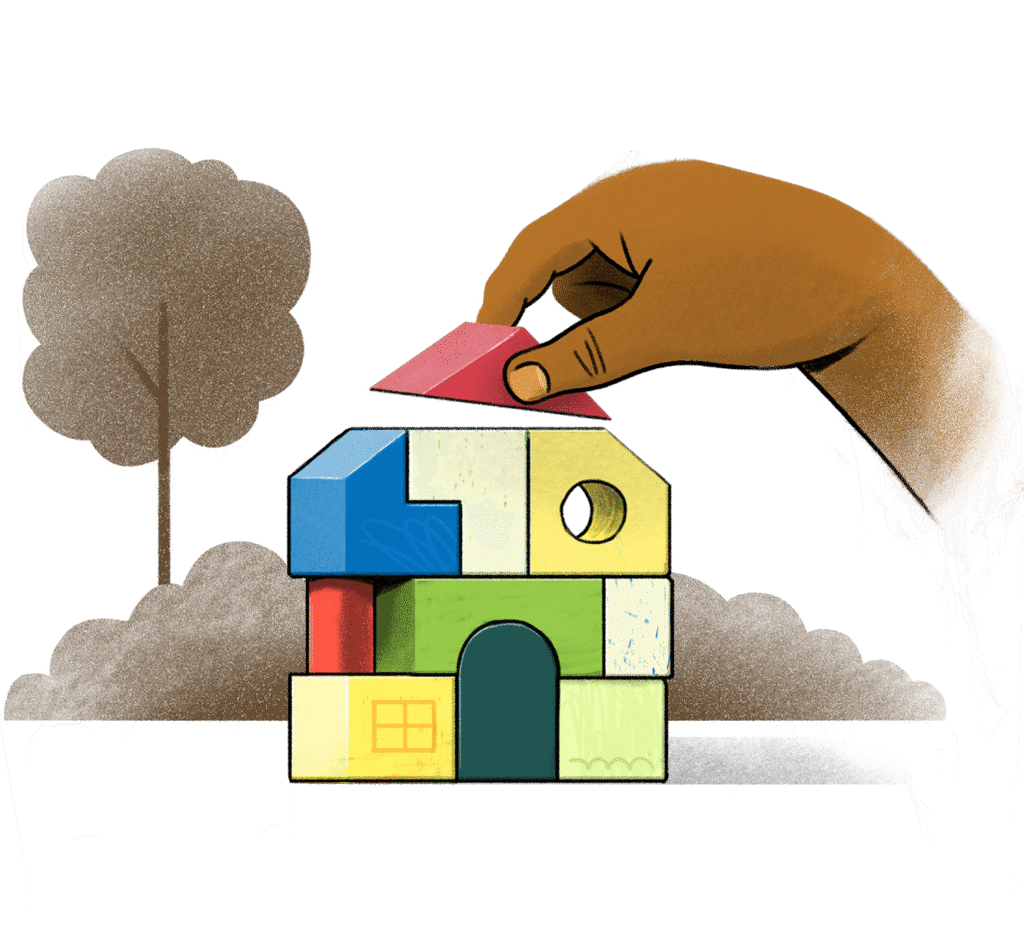About homelessness
Every day, Calgarians experiencing homelessness navigate complex challenges while seeking stability, safety, and hope. Understanding the causes and faces of homelessness help our community respond with informed compassion.
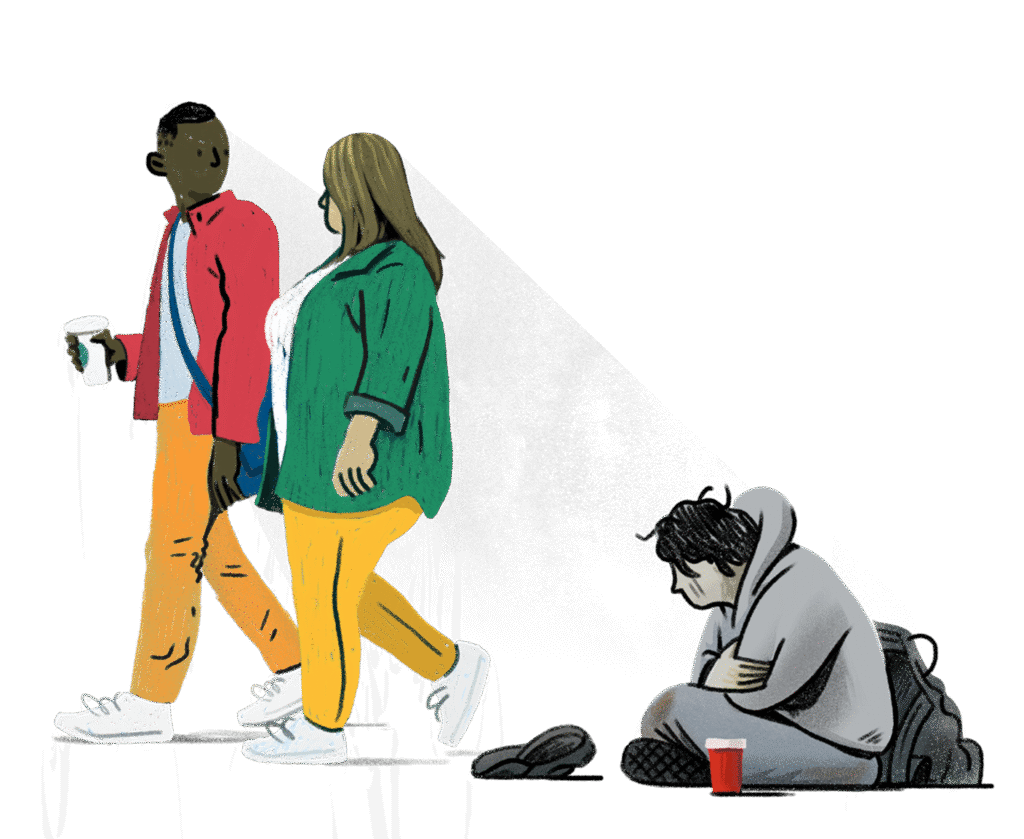
The person sitting next to you might be homeless, or one paycheque away from experiencing it
Homelessness doesn’t always look like what we expect. It can include the coworker sleeping in their car or the student couch surfing between friends. In Calgary, about 2 in every 1,000 people are experiencing homelessness right now.
What is homelessness?
When people think of homelessness, they often think of those living on the street. But did you know they only make up a small proportion of people who don’t have a home?
The spectrum of homelessness spans from transitional to chronic, and includes different forms such as:
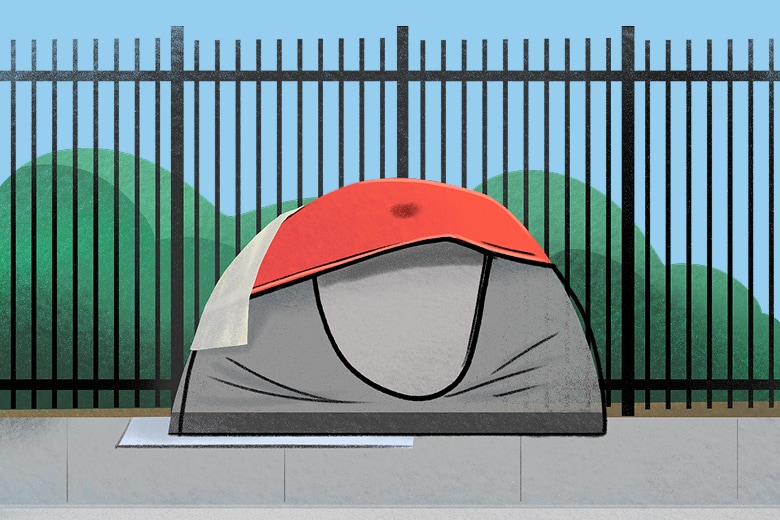
Unsheltered
This is what usually comes to mind when people think about homelessness. People who are unsheltered aren’t using emergency shelters, except during extreme weather. They may live in public spaces like parks or sidewalks, or places not meant for habitation like cars, garages, tents, or empty buildings.
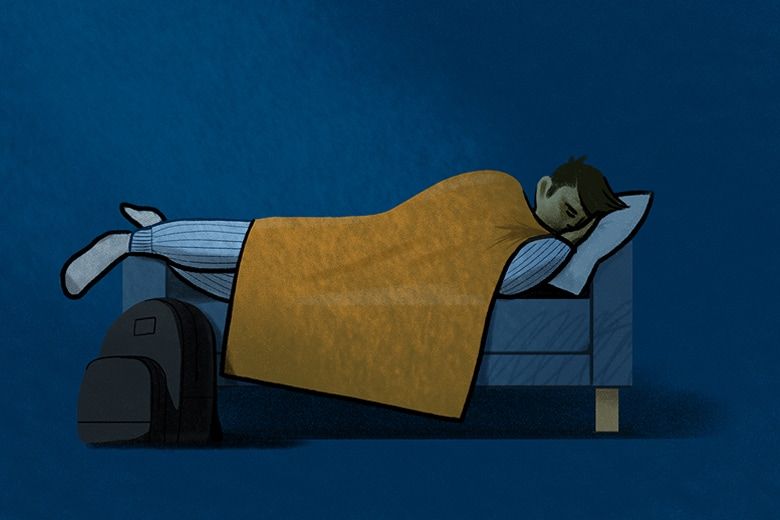
Provisionally accommodated
People who are provisionally accommodated live in temporary housing. This includes couch surfing with friends or living in a rental that lacks security. It can also include living in hospitals, correctional facilities, or reception centres for immigrants and refugees. Whatever form it takes, people who are provisionally accommodated do not have permanent housing.
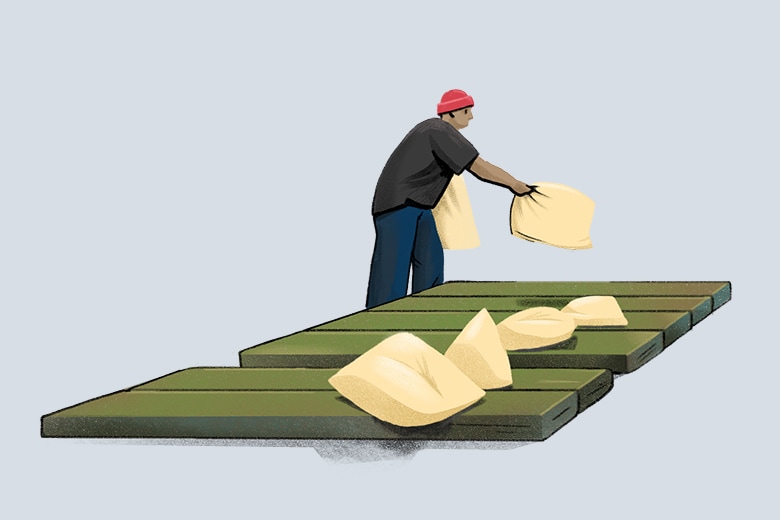
Emergency sheltered
People who use emergency shelters can also be experiencing homelessness. They may resort to shelters because they have lost their job, have been evicted, are fleeing family or domestic violence, or have mental health and addictions challenges that prevent them from maintaining a home. They could also be staying in hotels/motels funded by a homeless-serving program.
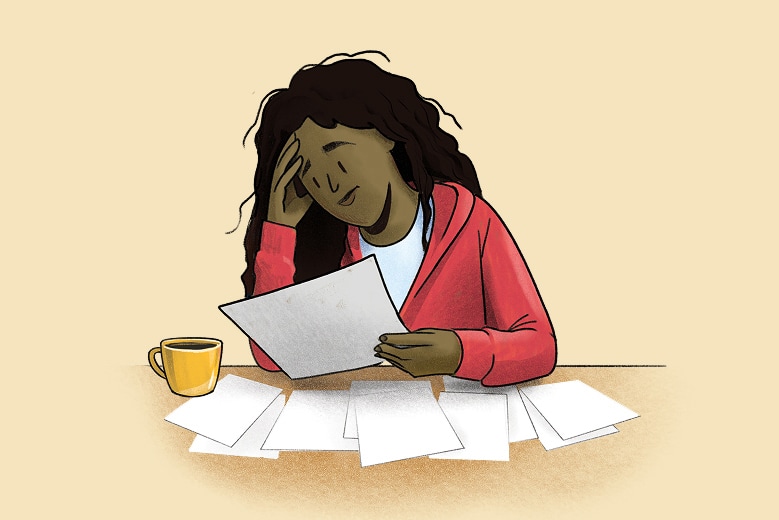
At risk of homelessness
People who are housed but one life event away from losing their place to live are at risk of experiencing homelessness. A shortage of affordable housing places people at risk, as do factors like living paycheck to paycheck, job loss, illness, addiction, or household breakdown during separation or divorce.
What causes homelessness?
No one is homeless but otherwise fine. In fact, homelessness rarely has a single cause. It can often be a perfect storm of factors—losing a job during a housing crisis, fleeing domestic violence without savings, or facing a health emergency when you’re already living paycheque to paycheque. It can also result when people flee war-torn or otherwise unstable parts of the world and come to Canada only to fall through the cracks of our system.
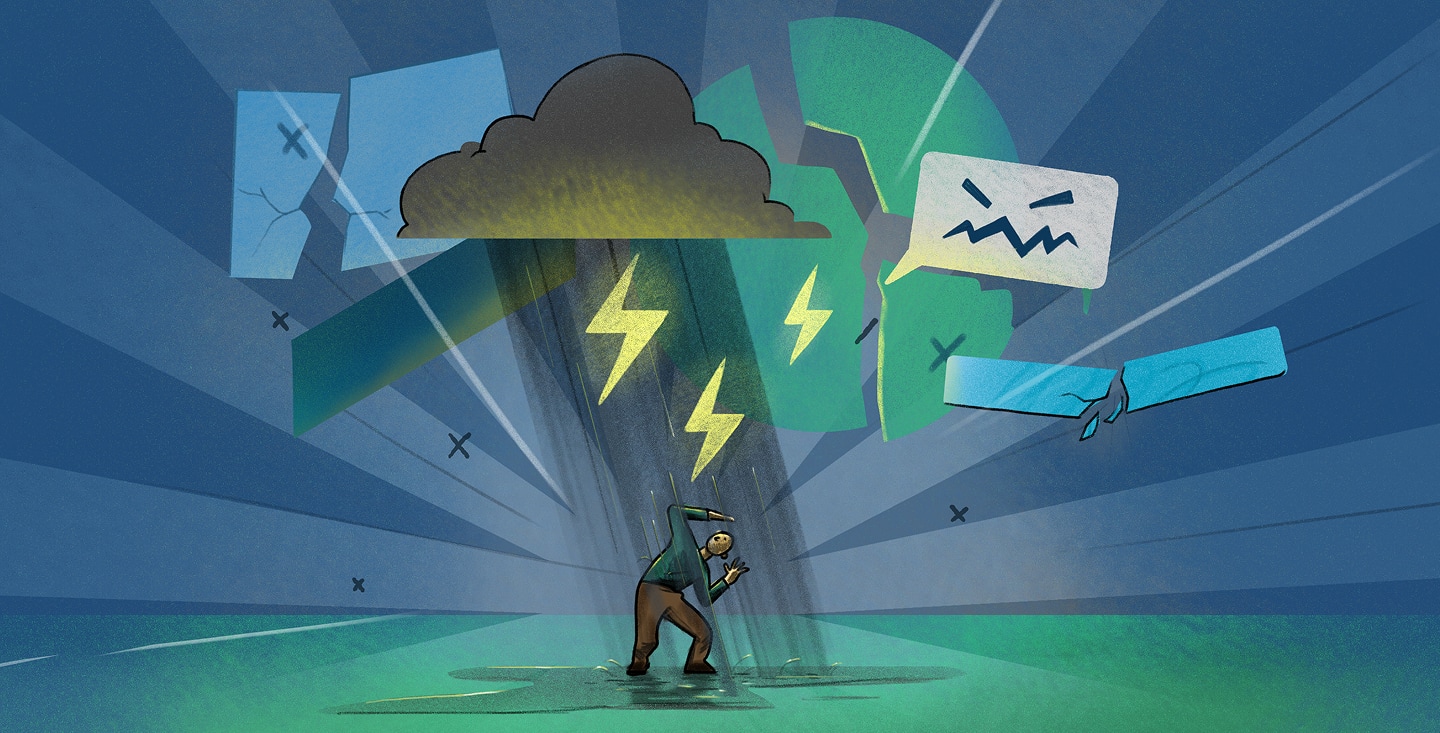
Systemic issues
Systemic issues contribute to a person’s experience of homelessness.
Poverty
Poverty arises from economic and social inequalities. These can often be based on factors outside of a person’s control, like low wages, inflation that leads to higher food and housing costs, discrimination, or a lack of work.
Economic changes
A declining economy can make it harder to find and keep a job, putting people at risk of homelessness. But did you know a strong economy can also contribute to homelessness? As a city grows, there can be pressure on the housing and rental market, which can drive up prices, making them too expensive for some people to afford.
Lack of affordable housing
A shortage of affordable housing makes it difficult for people to maintain stable housing. When affordable housing options are limited, people become more vulnerable to homelessness during times of job loss, illness, or other life challenges that affect their ability to pay rent or secure stable housing.
Lack of coordination
Government ministries and agencies work together as Calgary’s homeless-serving system of care. However, lack of coordination can mean people fall through the cracks. That’s why CHF coordinates efforts across the sector so people experiencing homelessness receive the help they need efficiently and effectively.
Colonialism
Indigenous peoples are significantly overrepresented in the homeless population compared to their proportion of Calgary’s overall population. Colonial policies including residential schools and The 60s Scoop have contributed to intergenerational trauma and loss of connection to community and culture—all factors that increase risk of experiencing homelessness.
Personal circumstances
An individual’s personal circumstances can contribute to homelessness, although it is typically intertwined with systemic factors like poverty.
Trauma
A strong correlation exists between trauma and homelessness. Long-term users of shelters in Calgary suffered childhood trauma at rates much higher than the general population. This included neglect, domestic violence, abuse, and parents with addictions.
Chronic health issues
Ongoing health challenges may contribute to a person experiencing homelessness. These conditions can make it difficult to maintain employment or stable housing, particularly when combined with other risk factors.
Mental health issues
Mental health challenges can both contribute to and result from homelessness. The stress and instability of not having a home can worsen existing mental health conditions, while untreated mental health issues can make it difficult to maintain housing and employment.
Domestic violence
Domestic violence puts people at risk of homelessness. A woman is killed every six days in Canada by her intimate partner. The reality is worse for Indigenous women, who are six times more likely to be killed than their non-Indigenous counterparts. For many people, leaving an abusive relationship means choosing between safety and housing stability.
Sexual orientation
Youth who identify as 2SLGBTQIA+ are overrepresented among the homeless population as a result of discrimination from family and friends, as well as systemic issues. Family conflict over sexual orientation often means they can’t return home, and they may avoid shelters at higher rates due to discrimination and violence.
Addiction
While the rate of substance use is higher among those experiencing homelessness than the general population, research indicates that only 38% of people experiencing homelessness use alcohol, and even fewer (26%) use other types of drugs. Substance use is only one of several factors that can put a person at risk of losing their housing, and substances are never the sole cause of homelessness. The stress of trying to survive without permanent shelter can also lead people to turn to alcohol and drugs as a coping mechanism.
Who experiences homelessness?
It’s not just who you think. Homelessness can affect working professionals, students, families, and seniors—people from every walk of life, whether they’re sleeping rough or not.
Adults
Men make up the majority of people without stable housing in Calgary. Indigenous adults are also at higher risk due to systemic factors including the legacy of colonialism. Women make up almost a third of people experiencing homelessness, though the actual number is likely higher since women often avoid streets and shelters, instead couch surfing or staying temporarily with others to reduce their risk of violence.
Youth
Youth aged 13 to 24 often experience homelessness after family conflict and violence. 2SLGBTQIA+ youth are overrepresented, frequently unable to return home due to family rejection. Recent Point-in-Time Counts have shown that Indigenous youth make up 50% of the youth homeless population, a significant overrepresentation compared to their proportion in the general population. This recurring pattern highlights systemic inequalities and the need for culturally appropriate services that address the challenges faced by Indigenous youth.
Families
Families experience homelessness due to low incomes, precarious employment, lack of affordable housing, or domestic violence. This includes single or two-parent households, adults with custody of children, pregnant couples, and multigenerational families. Family homelessness requires specialized approaches that keep families together while addressing their unique needs.
Homelessness in Calgary
The 2024 PiT Count identified that despite unprecedented headwinds, Calgary’s homeless-serving system of care has seen no increase in the rate of homelessness since 2022. Understanding the local reality helps our community develop targeted responses that build on Calgary’s existing strengths and meet the specific needs of our neighbours.
2024 Point-in-Time Count
Rate of homelessness over the years
(per 1000 Calgarians)
3,121
individuals and heads of households were identified as experiencing homelessness during the 2024 PIT count
Sheltered status
Gender identity
60%
Male
29%
Female
<1%
Trans or diverse
11% unknown
Ethnicity
All ages
Caucasian
1,239 people
Indigenous
771 people
African/Caribbean
341 people
Other racial ethnicity
215 people
18% unknown
Children & youth (0-17)
Caucasian
75 people
Indigenous
108 people
African/Caribbean
20 people
Other racial ethnicity
13 people
Immigration status
The proportion of individuals experiencing homelessness who hold some form of immigration status has risen to 16%, up from 10% in 2022.
Reasons for housing loss
Go deeper into the data
Disclaimer: The Point-in-Time Count provides a snapshot of homelessness on one specific night and helps identify trends over time. While it captures important data about people accessing shelters and living unsheltered, it may not reflect the full scope of hidden homelessness in our community.
How is CHF fighting homelessness in Calgary?
Calgary Homeless Foundation guides the fight against homelessness. Working in alignment with governments and collaboratively with service providers and community partners, we help translate complex system needs into coordinated, efficient ground-level action that maximizes the impact of every resource and creates lasting pathways out of homelessness.
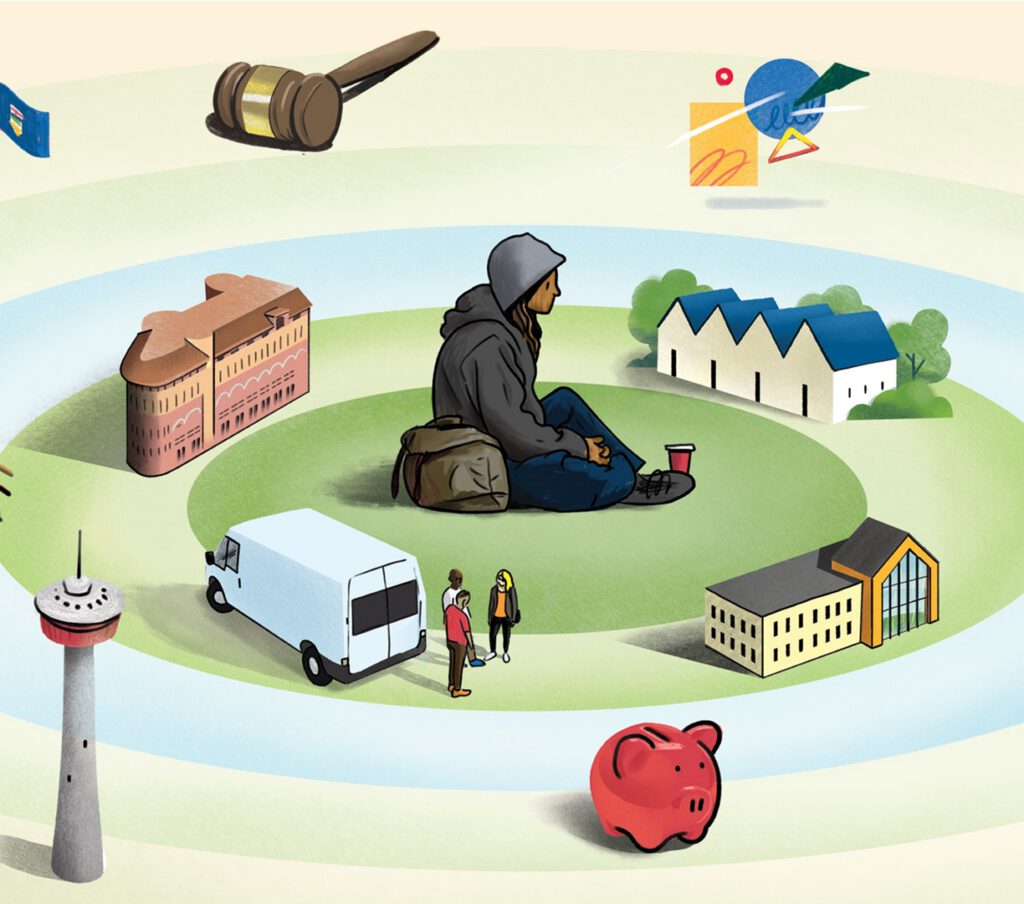
Help us fight homelessness
Your support enables CHF to respond swiftly to emerging community needs and critical situations. From damage deposits to winter essentials, donor dollars provide the flexibility to act when urgent situations arise, helping keep people housed and creating pathways home for our neighbours.
